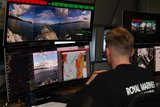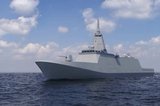Indra modernises Polish maritime system
Indra has completed the implementation of an advanced iMARE maritime traffic information system in Poland, the company announced on 15 December.
The system has been developed by Indra and Alcatel-Lucent in cooperation with the Polish Maritime Search and Rescue Service (MSPiR) and the three regional maritime offices.
iMARE has been installed in control centres in Świnoujście, Szczecin, Ustka, and Gdynia, allowing the country's maritime authority to manage vessel traffic in its 12 ports, along 440km of coastline and 60km of navigable channel in the River Oder.
iMARE maritime traffic information system collates data from different sensors to provide real-time and accurate information on movements in Polish waters. The system enables the advance detection of dangerous situations and the coordination of the proper response in order to avoid the risk of collision and environmental disasters.
Operators will be able to access information on each vessel and will be aware if its trajectory, position, cargo and destination. They will also be able to establish contact with vessels through a range of communications systems.
Another ten ports along the Polish coastline have this same solution so they can share the view of everything taking place in the waters under their command.
The system includes a network of sensors, radars, cameras, meteorological stations, radio direction finders and a vessel automatic identification system (AIS) which covers the whole of the country's coastline. The system relays information to the European Maritime Safety Agency's SafeSeaNet system (EMSA).
More from Naval Warfare
-
![NATO tests use of “undetectable, jam-proof” laser communication in maritime scenarios]()
NATO tests use of “undetectable, jam-proof” laser communication in maritime scenarios
As part of its effort to better prepare its capabilities for operations in contested and congested scenarios, NATO evaluated a Lithuanian ship-to-ship terminal designed to not be susceptible to enemy interference.
-
![US Navy advances with the Harpoon Service Life Extension Programme]()
US Navy advances with the Harpoon Service Life Extension Programme
The US Navy plans to improve Harpoon’s anti-ship and land attack capabilities by equipping the missiles with sensors and technologies required for succeeding in future battlespace.
-
![Mitsubishi eyes future with Australia’s Mogami selection]()
Mitsubishi eyes future with Australia’s Mogami selection
With Australia’s selection of the Mogami-class for Project Sea 3000, Mitsubishi is investigating local production in the next decade as potential export opportunities emerge.
-
![Thales’ new Sonar 76Nano could equip UK Royal Navy on anti-submarine warfare missions]()
Thales’ new Sonar 76Nano could equip UK Royal Navy on anti-submarine warfare missions
The new sonar is designed to equip uncrewed underwater vessels, with the potential to be used by the Royal Navy for its Atlantic Bastion and Atlantic Net missions.
-
![Hanwha wins Australian government approval to increase its stake in Austal]()
Hanwha wins Australian government approval to increase its stake in Austal
The contract would mean the two shipbuilders can collaborate strategically and enhance shipbuilding capabilities in Western Australia.























